Ein echtes SPIELZEUG! Bin jetzt rund 50 Jahre dabei (Uups...!!! Echt??? Ja, hab tatsächlich mal konkret nachgerechnet...), aber bis jetzt ist mir noch selten so ein vielschichtig klingender und dabei doch so einfach zu bedienender Synth unter die Finger gekommen. Musste nur in ganz seltenen Fällen mal in die (durchaus brauchbare!) Anleitung schauen, eigentlich ist der Nord Wave 2 weitgehend selbst erklärend.
Klingen tut er phänomenal - für meine Ohren. Mit das Wichtigste... oder? Und sitzt gut im Mix. Die Bandbreite der hier gebotenen Sounds übersteigt den täglichen Bedarf bei weitem, weckt aber dennoch meine Neugier... Er hat einfach alles drauf, von schrill digital bis warm (virtuell) analog und alles dazwischen. Er bedient dabei zwei Welten: Notorische Schrauber ebenso wie Tastenvirtuosen die einfach loslegen und sich selbst und ihre Zuhörer schwindlig spielen wollen. Das nenne ich mal echte Synthese...
Die macht mir der Wave 2 so leicht, dass ich nun getrost gleich vier meiner seitherigen Buddies ausmustern kann und zwar ohne scheinheilig oder wohlstandsverblödet über den "Verlust" lamentieren zu müssen... Für mich zur rechten Zeit nämlich eine erwünschte, altersgerechte Anpassung. In meinem Alter braucht man keine Burgen mehr...
Die verbaute Waterfall-Tastatur ist für mich ein ganz besonderer Kracher. Sehr dynamisch und ausdrucksstark spielbar. "Reinlangen" und sofort "Ja, hier bin ich richtig" - empfinden... SEHR GUT ausgelegt für die ganze Bandbreite der gebotenen Sounds. Orgel, Synth, Piano, Flächen, FM-glockiges, Akustiksamples, elektronisches Gezirpe - alles wird schnörkellos und kompetent umgesetzt. Selbst heftigste Vintage-Macho-Mehrfach-Emerson-Hammond-Glissandos über die gesamte (toll verarbeitete) Tastatur enden nicht mit blutigen Fingerspitzen! Phantastisch!
Was mir im Gegensatz dazu optisch und haptisch jedoch richtig mißfällt: Das schmalbrüstige Mod-Wheel aus steinartigem Material (oder doch aus Metall?) und der pfriemelige Stummel-Fummel-Holz-Pitchbend-Hebel, der wie ein fauler Zahn aus dem Gehäuse rauslugt. Wirkt irgendwie schäbig und völlig unpassend gemessen am edlen Rest...
Aber - man gewöhnt sich ja auch als alter Sack noch an "Neues", so auch an diesen doch etwas gewöhnungsbedürftigen Design-Furz mit vermeintlich "kreativem" Alleinstellungsanspruch, denn diese Kombi funktioniert in der Praxis durchaus... Muss ich zugeben.
Trotzdem - mindestens optisch begeistert mich die Sache immer noch nicht so recht. Auch von der Haptik gefallen mir 2 Räder oder Joystick einfach besser. Am liebsten würde ich da die Alu-Teile von meinem MatrixBrute einbauen...
Dies ist übrigens mein erster Nord-Synth. Habe die Teile zwar schon ziemlich lange beobachtet, aber bis jetzt auf eine Anschaffung verzichtet wegen Fehlens eines ordentlichen Text-Displays und entsprechender Bezeichnungsmöglichkeiten der Patches. Hat ja ewig gedauert bis die Herrschaften aufgewacht sind. Jetzt wurde sogar mit 2 Displays (Eins zur Anzeige der Samples, Waves etc.) nachgerüstet. Mit den neuen Einstellmöglichkeiten (Kategorien, Listenansicht, Einzelansicht...) zur Sortierung bei den Aufrufmöglichkeiten der Sounds bleiben dann vollends keine Wünsche mehr offen. Clever gelöst. Geht doch.
Seitenhieb: Das Bedienkonzept samt Klartext-Displays des Wave 2 stünde auch der Nord Drum 3P GUT ZU GESICHT! Ein echt toller SciFi-Drum-Synth. Eigentlich. Wird aber mit völlig undurchsichtigem Menü-Handling und Uralt-Segment-Display aus Neandertal ins Abseits geschossen. GRÄSSLICH! Und völlig unverständlich...
Insgesamt ist der hier besprochene NORD WAVE 2 SEHR KLAR strukturiert und mit vorbildlicher Qualität - Hard- und Software - produziert. Das Gesamt-Konzept stellt vieles in den Schatten (nicht nur den hauseigenen Vorgänger) und inspiriert den geneigten Tasten-Dompteur zu Entfaltungsmöglichkeiten in jedwede Richtung.
Der Nord Wave 2 wurde (durchaus unerwartet) nun tatsächlich im Verlauf weniger Wochen zu meinem Haupt-Instrument - trotz des kritisierten Fauxpas in der ModWheel und Pitchbend Abteilung - und hat hier sogar meinen Korg Kronos 88 - wenn auch nicht vollständig - als eierlegende Wollmilchsau ein wenig verdrängt...
Die insgesamt traumhaft reibungslose Bedienung des Wave 2 gepaart mit der absolut kongenialen Tastatur und den fabelhaften Sounds führten dazu, dass ich meine arg gebeutelten Arthrose-Griffel kaum noch von diesem Synth wegkriege. Von der Idee zum Ergebnis in NullKommaNix - sogar während der laufenden Performance - da macht selbst absichtsloses Spontan-Chillout-Rumgedudel wieder so richtig Laune! Aber sowas von...
Fazit:
WAS FÜR EIN INSTRUMENT!
Ein echter Companion. Rundum inspirierend. Trotz "faulem" Pitchbend-Zahn... Nun ja, meine eigenen sind auch nicht mehr die Allerbesten...
PS: (10.04.2023) Die erwähnten Hammond-Sounds sind natürlich nicht im Nord enthalten, die sind aus meinem eigenen Sample-Fundus aufgespielt... Hatte ich damals bei meiner Rezi glatt vergessen zu erwähnen. Allein diese Möglichkeit ist ein heftiges Pfund...



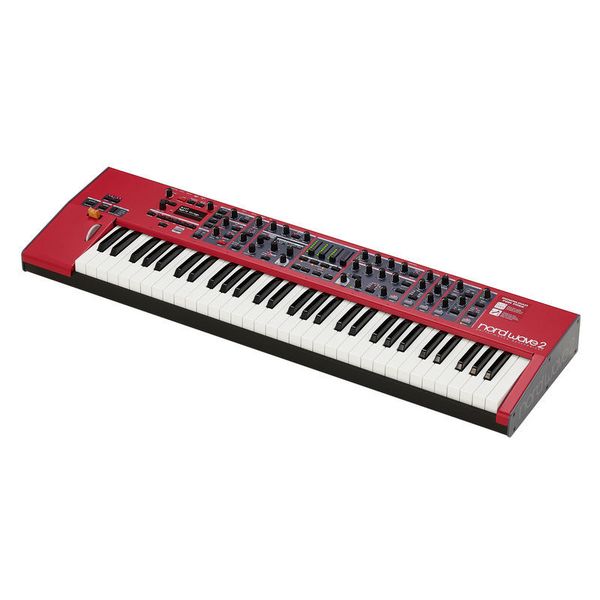
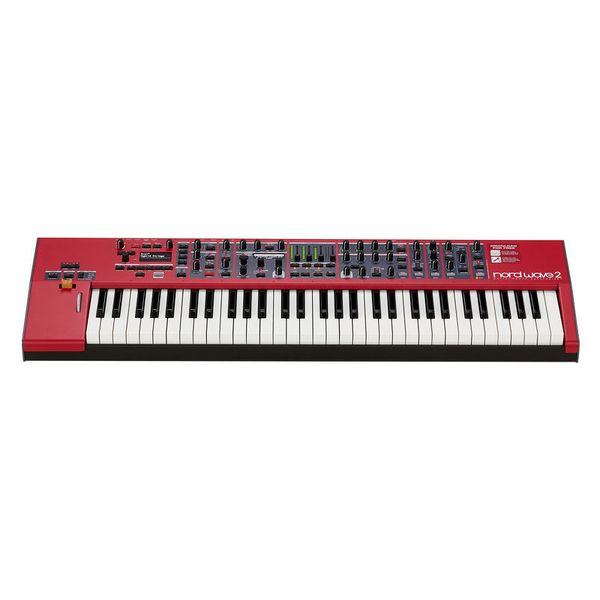
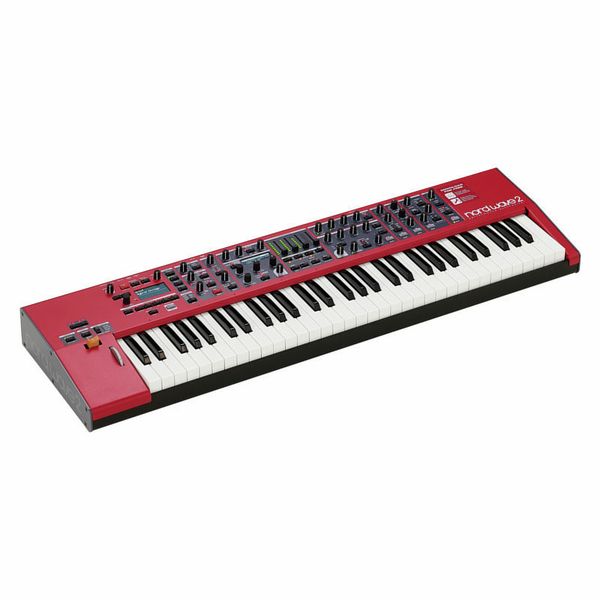
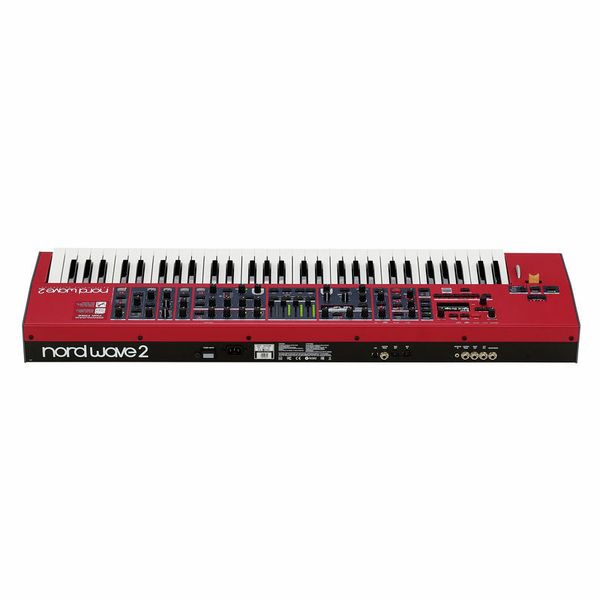
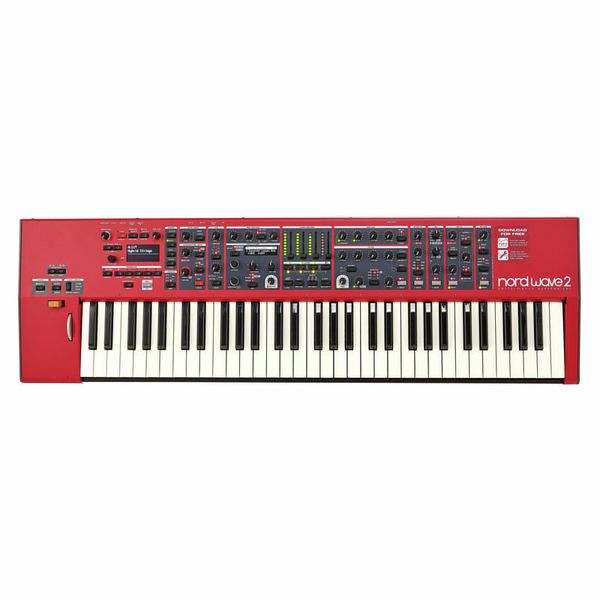
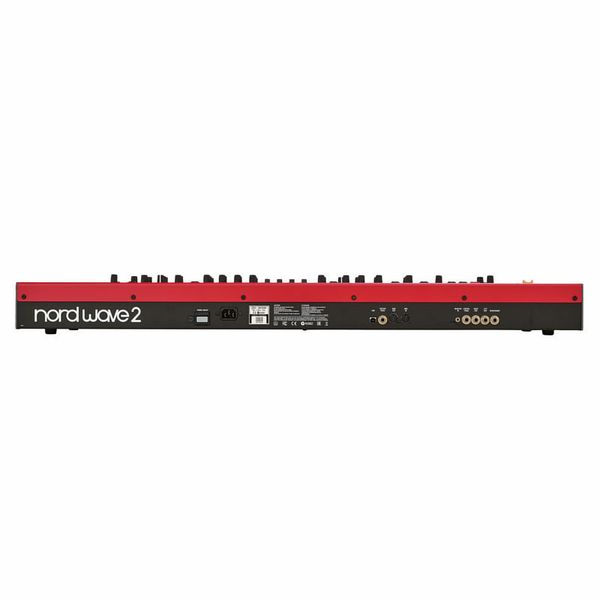
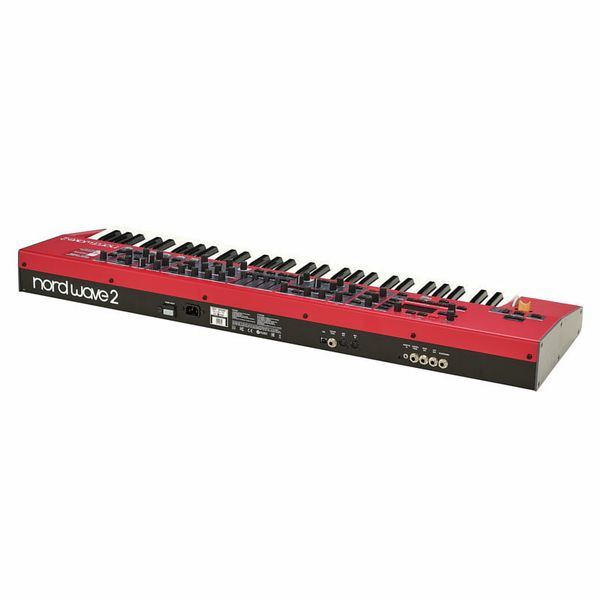
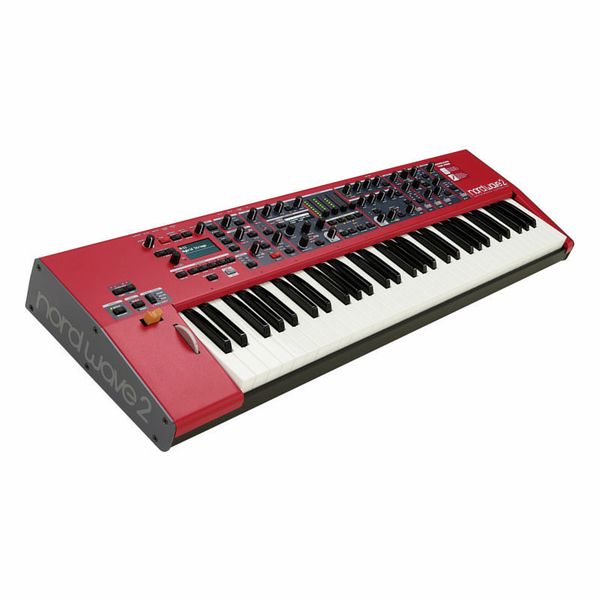
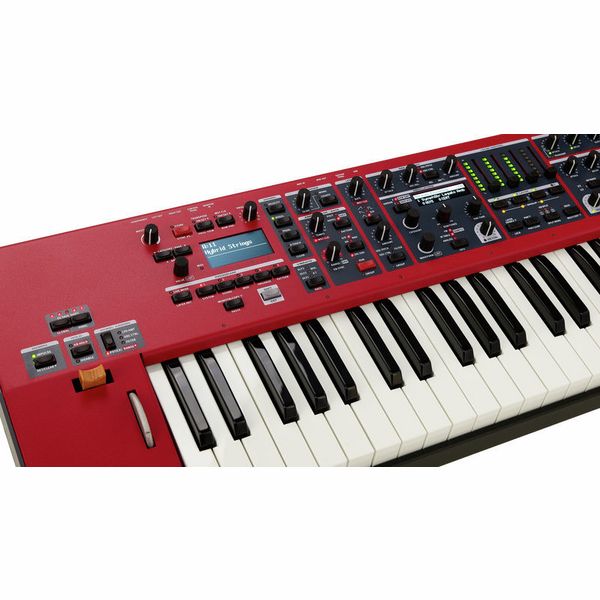
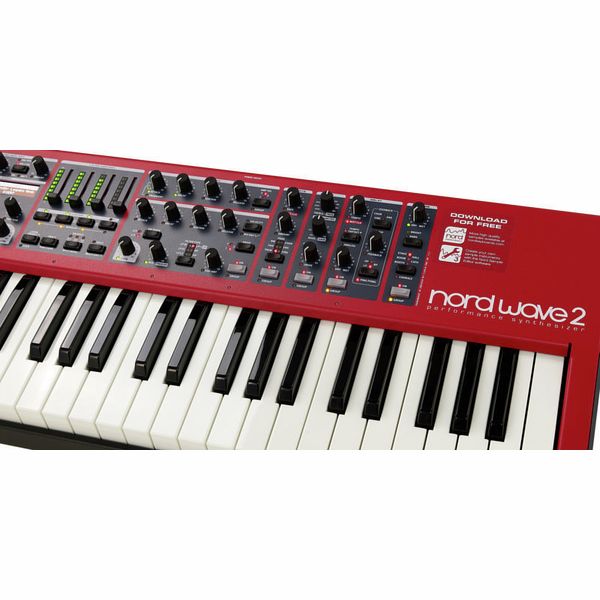
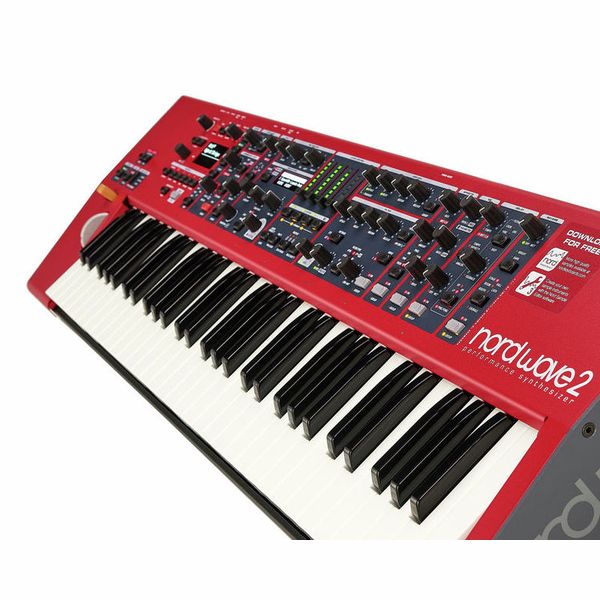
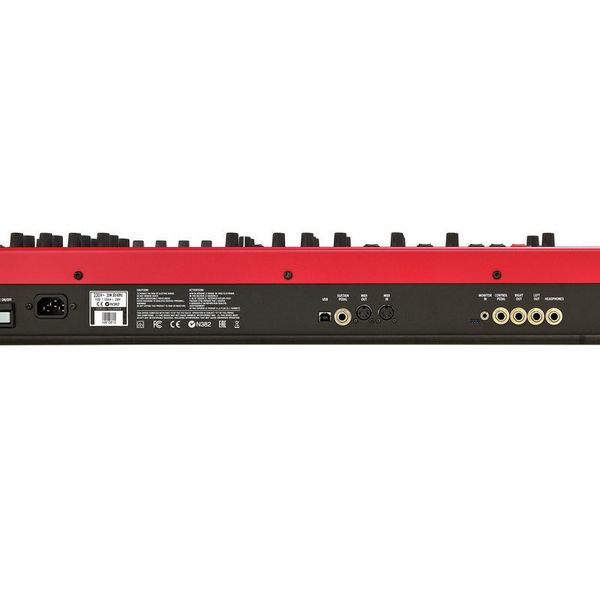
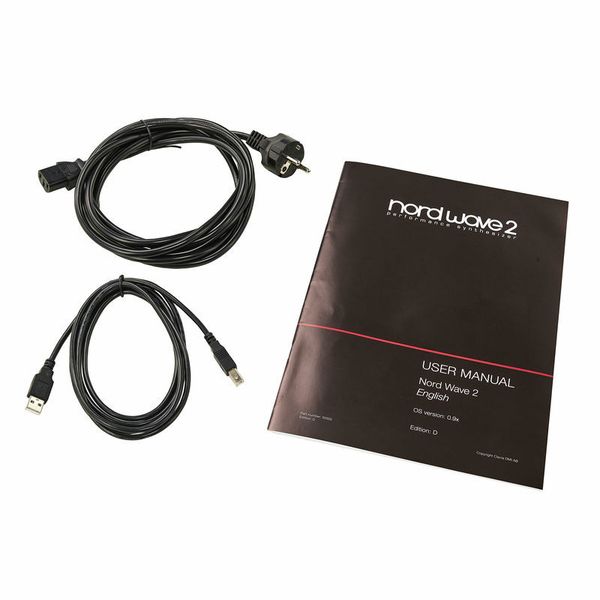















)
)
)


